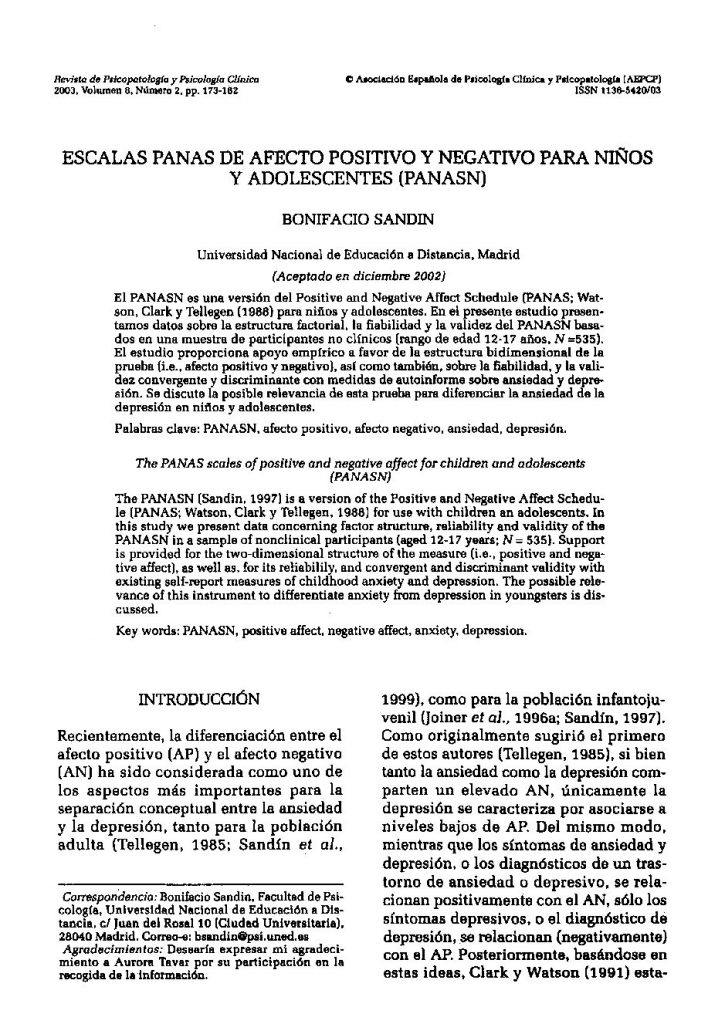Escala PANAS de afecto positivo y negativo para niños y adolescentes (PANASN).

- La intervención de autoayuda por correo en el tratamiento de fumadores.
- ¿Existe un patrón diferencial de conducta de enfermedad y adhesión al tratamiento de la infección por VIH/SIDA en pacientes con historia de abuso de drogas?.
- Detección de problemas relacionados con el alcohol en la familia a través de los hijos.
- La Técnica de Rejilla como instrumento de evaluación y formulación de hipótesis clínicas.
- Escala PANAS de afecto positivo y negativo para niños y adolescentes (PANASN).
- Informe sobre las actividades llevadas a cabo en la Comisión Nacional de la Especialidad en Psicología Clínica (CNEPC).
- Los fenómenos disociativos: Una revisión conceptual.
The PANASN (Sandín, 1997) is a version of the Positive and Negative Affect Schedule (PANAS; Watson, Clark y Tellegen, 1988) for use with children an adolescents. In this study we present data concerning factor structure, reliability and validity of the PANASN in a sample of nonclinical participants (aged 12-17 years; N = 535). Support is provided for the twodimensional structure of the measure (i.e., positive and negative affect), as well as, for its reliabilily, and convergent and discriminant validity with existing self-report measures of childhood anxiety and depression. The possible relevance of this instrument to differentiate anxiety from depression in youngsters is discussed.
El PANASN es una versión del Positive and Negative Affect Schedule (PANAS; Watson, Clark y Tellegen (1988) para niños y adolescentes. En el presente estudio presentamos datos sobre la estructura factorial, la fiabilidad y la validez del PANASN basados en una muestra de participantes no clínicos (rango de edad 12-17 años, N =535). El estudio proporciona apoyo empírico a favor de la estructura bidimensional de la prueba (i.e., afecto positivo y negativo), así como también, sobre la fiabilidad, y la validez convergente y discriminante con medidas de autoinforme sobre ansiedad y depresión. Se discute la posible relevancia de esta prueba para diferenciar la ansiedad de la depresión en niños y adolescentes.



